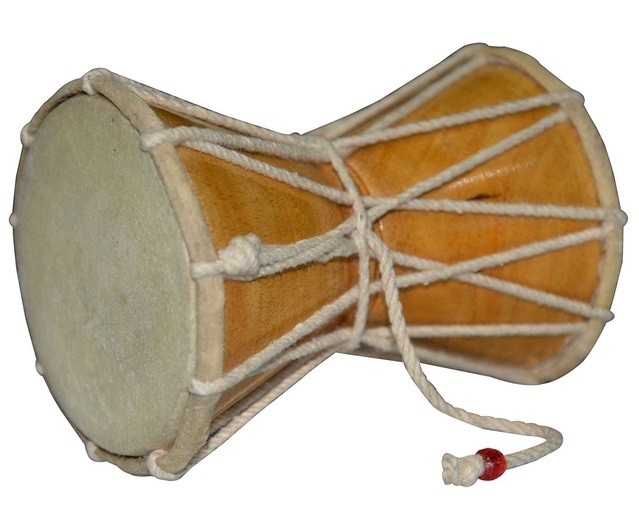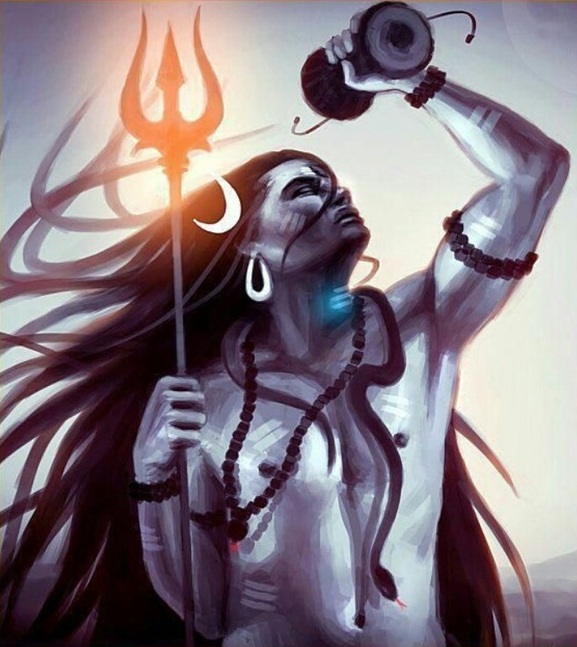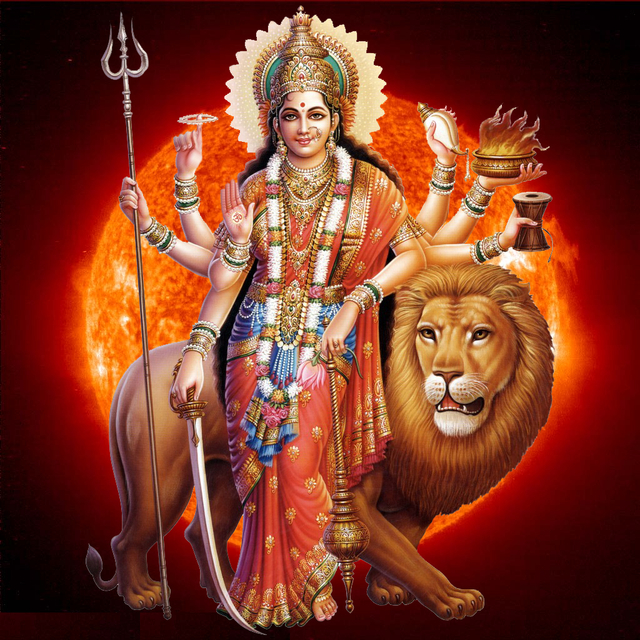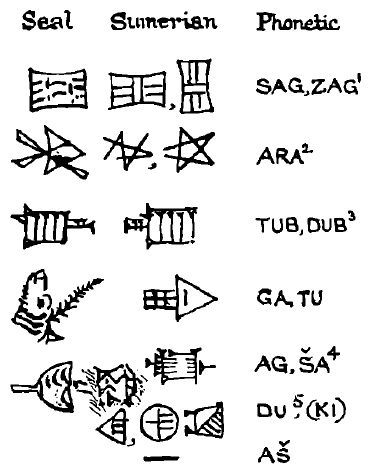
| DAMRU SYMBOL 18. Damru Symbol :
The best way to find connection between civilizations is through symbols.
Damru is associated with Shiv and sometimes Damru is also shown with his wife Parvati / Durga.
Damru has a phonetic value of Kan, Gan and Sag, Zag.
Sag, Zag also represents Indra / Gis'zax (Caxus) / Adam / Thor / Sag / Zag as well as Sargon I i.e. Sagar.
Shiv who Hindus call God is Indra / Gis'zax (Caxus) / Adam / Thor / Sag / Zag and his wife Parvati is Inanna / Durga / Eve.
Here, we are associating Damru with Indra / Shiv / Adam / Thor / Sag / Zag because looking at the history and place of Shiv / Sag and his connection with Inanna they all perfectly match where as the Damru shown as Kan, Gan is of Kanwa who was a fire priest in Indus valley does not match with Damru of Shiv and his history as Indra / Gis'zax (Caxus) / Adam / Thor / Sag / Zag.
Above all Shiv is always shown with Trident and his wife Parvati / Durga is also shown with Trident and Trident is associated with Indra / Shiv / Adam / Thor / Sag / Zag.
The Damru shown in the below seal is of Sagar or Sargon 1, having symbol of Damru because phonetic value of Sag, Zag is Damru and Sargon 1, was son of Indra / Shiv / Adam / Thor / Sag / Zag.
I am not going to explain in detail because as said before I am assuming that people have already read books written by Lieutenant Colonel Laurence Austine Waddell hence, I am going to put here images to prove my point.
Damru
Shiv / Adam / Thor with Damru
Durga / Parvati / Inanna / Eve with Damru According to Lieutenant Colonel Laurence Austine Waddell :
The Indo-Sumerian Seals Deciphered (1925) :
SEAL No. VII.
This seal (Fig. 2, VII.) is of first-rate historical importance for both Indian and Mesopotamian history, as it is disclosed as the actual seal of the great emperor Sargon I. of Agade, under his solar Indian Epic title of "Sagara" as detailed under the previous seal of his "minister Tax." It would appear that that great emperor, in the course of his world-wide conquests, actually visited his colony of Edin in the Indus Valley, or "S'aka Land," as it is called in the Indian Epics; and that he left his seal in the hands ofhis governor there to stamp official documents. This would now explain more fully than has hitherto been known or suspected the real basis of fact on which Sargon I. claimed the title of "Lord of the Lower Sea" (the Persian Gulf and Indian Ocean).
FIG.
12 : Signet Inscription of Sagara of Agdu (S'aki or Edin ?) (1.
Sumer sign, T.D., 176; B.W., 291. Sag "prince" B., 6461;
with Akkad value S'arru "king"., B., 6503 - i.e., same
value as first part of Sargon or S'aru-kin's name.
The
place-name here appears to have as its first sign the word-sign
Ag or S'a, rather than that of "Edin"; whilst the second
sign may read either du or ki, in which these form an essential
portion of the place-name, and not mean merely "fort"
or "land" or "city," as the "land"
or "dwelling" element is the first sign Ga or Gu. In favour
of the reading S'aki is the fact which we have seen that this was
a Sumerian name for the "Edin temple of the Slave-girl,"
and it is clearly the equivalent of the Indian Epic S'aka or "The
Land of the S'akas," an Epic title of the Indus Valley, as
seen later on.
Note : Sacae or Goths kept long locks so is Shiv shown with long hair locks in his photos. |



